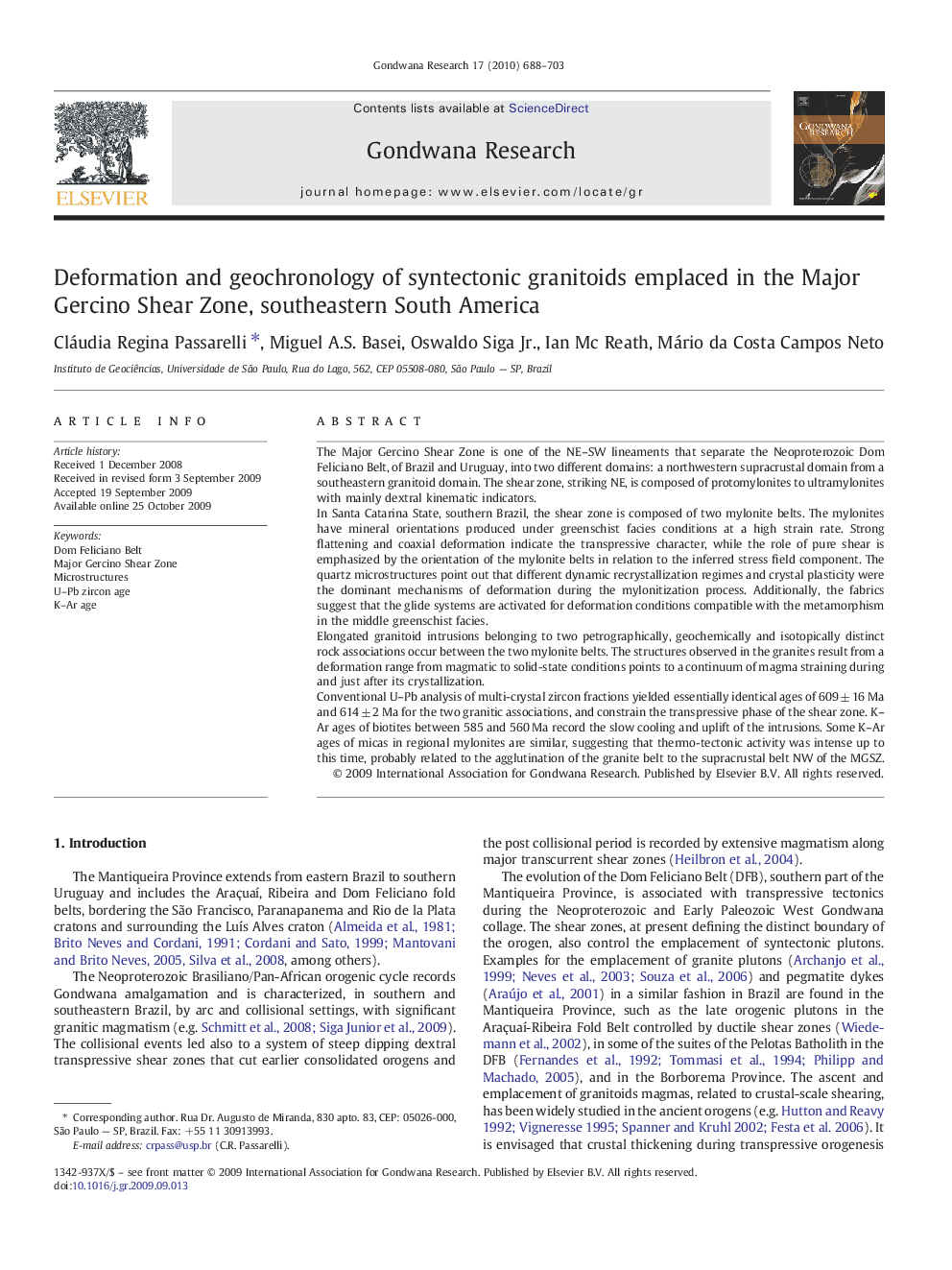| کد مقاله | کد نشریه | سال انتشار | مقاله انگلیسی | نسخه تمام متن |
|---|---|---|---|---|
| 4727413 | 1356374 | 2010 | 16 صفحه PDF | دانلود رایگان |

The Major Gercino Shear Zone is one of the NE–SW lineaments that separate the Neoproterozoic Dom Feliciano Belt, of Brazil and Uruguay, into two different domains: a northwestern supracrustal domain from a southeastern granitoid domain. The shear zone, striking NE, is composed of protomylonites to ultramylonites with mainly dextral kinematic indicators.In Santa Catarina State, southern Brazil, the shear zone is composed of two mylonite belts. The mylonites have mineral orientations produced under greenschist facies conditions at a high strain rate. Strong flattening and coaxial deformation indicate the transpressive character, while the role of pure shear is emphasized by the orientation of the mylonite belts in relation to the inferred stress field component. The quartz microstructures point out that different dynamic recrystallization regimes and crystal plasticity were the dominant mechanisms of deformation during the mylonitization process. Additionally, the fabrics suggest that the glide systems are activated for deformation conditions compatible with the metamorphism in the middle greenschist facies.Elongated granitoid intrusions belonging to two petrographically, geochemically and isotopically distinct rock associations occur between the two mylonite belts. The structures observed in the granites result from a deformation range from magmatic to solid-state conditions points to a continuum of magma straining during and just after its crystallization.Conventional U–Pb analysis of multi-crystal zircon fractions yielded essentially identical ages of 609 ± 16 Ma and 614 ± 2 Ma for the two granitic associations, and constrain the transpressive phase of the shear zone. K–Ar ages of biotites between 585 and 560 Ma record the slow cooling and uplift of the intrusions. Some K–Ar ages of micas in regional mylonites are similar, suggesting that thermo-tectonic activity was intense up to this time, probably related to the agglutination of the granite belt to the supracrustal belt NW of the MGSZ.
Journal: Gondwana Research - Volume 17, Issue 4, May 2010, Pages 688–703